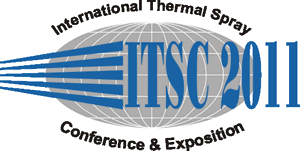
|
2537 |
|
Wednesday, September 28, 2011, Saal A 11:50 AM Industrial Gas Turbines 1 |
|
TBC coating cost reduction by optimization of the atmospheric plasma spray process |
|
Sebastian Mihm* / ALSTOM AG (Switzerland), Switzerland Thomas Duda / ALSTOM (Switzerland) Ltd., Switzerland Heiko Gruner/ Medicoat AG , Switzerland Georg Thomas/ Medicoat AG, Schweiz Birger Dzur/ Technische Universität Ilmenau, Germany |
|
The global economic growth has triggered a dramatic increase in the demand for resources over the last few years, resulting in steady price increases for energy and raw materials. Alstom, as a future-oriented company, focuses on increasing the efficiency of resource and energy usage when developing new technologies. In the gas turbine manufacturing sector, process optimizations of cost-intensive production steps involve a heightened savings potential and form the basis for securing future competitive advantages in the market economy. In this context, the atmospheric plasma spraying (APS) process for thermal barrier coatings (TBC) has been optimized. A constraint for the APS coating process optimization is the use of the existing coating equipment. Furthermore, the current coating quality and characteristics are not allowed to change in order to avoid new qualification and testing. Using Alstom`s long year experience in atmospheric plasma spraying and empirically gained data, the process optimization plan included the variation of e.g. the plasma gas composition and flow rate, the electrical power, the arrangement and angle of the powder injectors to the plasma jet, the grain size distribution of the spray powder and the plasma torch movement procedure like spray distance, offset and iteration. In particular, plasma properties (enthalpy, velocity, temperature), powder injection conditions (injection point, injection speed, grain size distribution,) as well as the coating lamination (coating pattern, spraying distance) are examined. The optimized process and resulting coating was compared to the current situation by several diagnostics methods, eg. an enthalpy probe (Tekna), Spraywatch (Oseir) and ICP sensor (Stony Brook University) measurements. The optimized process provides significantly lower costs by achieving the requirement of comparable coating quality. Furthermore, a contribution was made to a better comprehension of the atmospheric plasma spraying of ceramics. |